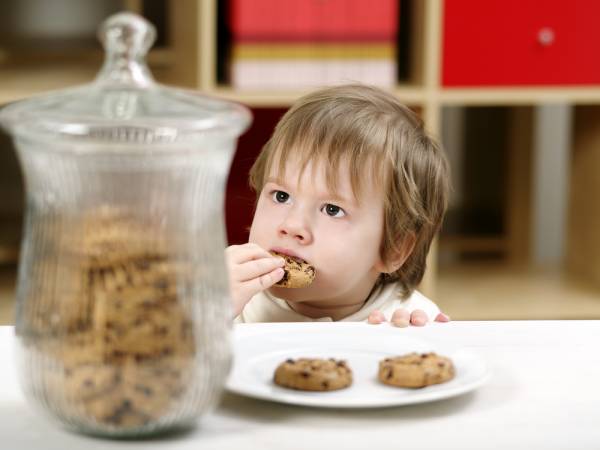“Good habits formed at youth make all the difference.” Even Aristotle knew this way back in the time of the ancient Greeks. So why do so many of us fight bad eating habits we’ve had since childhood? And what can we do to prevent these problems in future generations?
The Dilemma
Our society faces a serious dilemma, and it’s summed up well in the title of an article by Eric C. Stevens: Kids Are Fatter, Sicker, and Slower – What Can We Do About It?
Childhood obesity and high rates of diabetes in kids are well known symptoms of some of our less-than-healthy cultural habits. So what do we do? Eric proposes a shift in the way we as a society address and encourage health during childhood:
The time has come for action. It’s no longer enough to say it’s up to families to change their eating and exercise habits. What’s needed is action both on a personal and on a policy level. All of us need to get involved and not just pass the buck by stating the obvious – that everyone has a choice to be fit or not. Kids need help, not just a lecture that it’s up to them or their parents.
So let’s start with one of the most basic habits we can address as parents, coaches, and teachers: food. Unfortunately, that’s easier said than done when you have fast food and candy on every corner. Here are three easy steps you can take to make some headway.
Step 1: Vanquish the Sugar Bugs
If you asked people to name the biggest food player in the childhood obesity epidemic, they would probably mention sugar. Unfortunately, obesity isn’t the only problem that stems from an indulgent sweet tooth. Author Jonathan Precel explains the link between excessive sugar intake and other common childhood problems like ADHD in his article, The Deadly Ways Excess Sugar Is Stunting Your Child:
Within our brains resides a chemical known as brain-derived neurotrophic factor (BDNF). BDNF is responsible for creating new long-term memories, learning, and higher order thinking. Exercise has been shown to positively influence the growth of BDNFwhilst diets high in sugars reduce the growth of BDNF, making it hard for kids to learn new things. So when your son comes home from school and says he didn’t do anything, maybe he really didn’t or maybe he did, but just can’t remember because of all that sugar he’s been eating.
According to the World Health Organization, the average American child consumes 32 teaspoons (approximately 512 calories or 128 grams) of sugar daily. That’s a whopping 25.6 percent of daily calories for the average child. The first step any parent or caregiver can take in improving their child’s diet is to decrease sugar intake, whether the sugar comes from Cap’n Crunch or those “healthy” organic granola bars.

Step 2: Search and Destroy Highly Processed Foods
Additionally, the almost unavoidable processed foods that line the grocery store aisles contribute to common childhood conditions like ADHD, autism, and type 2 diabetes. I outlined ten common food processing ingredients to avoid in my article What Processed Food Is Doing To Kids and How We Can Change It:
- High fructose corn syrup
- Trans fat – or in its common guise of ‘partially hydrogenated oil,’ which you might find in products even if the trans fat percentage is listed as 0%
- MSG, or monosodium glutamate – or any other disguised versions like textured protein or hydrolyzed protein
- Artificial colors
- Brominated vegetable oil
- Artifical sweeteners/sugar alcohols
- Various offensive oils – corn oil, palm oil, soybean oil
- Wheat flour
- Nitrates/nitrites
- Butylhydroxytoluene, or BHT
Teach your children about the importance of eating a variety of whole foods. They might resist at first, just like anyone who’s trying to break a bad habit. Help them out and don’t keep junk food in the house on the high shelves, stored away like the forbidden fruit. Instead, provide accessible, tasty, healthy snacks for your children to eat throughout the day. As Fred Fornicola noted in his article, 5 Ways You Can Help Prevent Childhood Obesity:
With some proper planning, a child can have a very good day of eating healthy. Providing a child with easy-to-access foods can make all the difference in the world. Having cut up vegetables, fruit, nuts, and seeds available can fill in for great snacks while breakfast, lunch, and dinner can supply them with the majority of their body and mind building nutrients.
Bottom line when it comes to highly processed foods: save them for parties, where they are often unavoidable, and emergencies when you don’t have time to prepare healthy food in advance. Otherwise, prevention is key – keep junk food out of the house. Because we can guarantee, if it’s in the house, they will find it and eat it.

Step 3: Have Fun
In her article, Comic Books Inspire Healthier Eating for Kids, Becca Borawski Jenkins explained how a unique project helped improve eating habits in young children:
As part of the project, children in grades 3-5 were asked to create comic books and comic book characters. These characters were to embody healthy, fit lifestyles including daily physical activity, eating fruits and vegetables, drinking water instead of sugary drinks, and cutting down on television and computer time.
Sure enough, this fun activity helped the kids establish better eating habits. Children have a natural openness to things they see as fun and enjoyable – and who can blame them? So once you’ve overcome the two common addict foods – sugary treats like candy and highly processed foods like salty frozen dinners and fast food – it’s time to get to the good stuff: fun. As writer David Varnes noted, allowing your kids to have fun creating meals will also encourage them to take ownership of their eating habits, which is a real achievement for anyone:
Kids will enjoy food more if they can take ownership of it. Give them the chance to help in preparation. Make food preparation a family fun activity. Young children can peel and chop (we’ve had children as young as four handling vegetable knives in our school, and there are specialty knives made for young hands) or even just rip apart leafy greens. Older children can be taught how to prepare foods. Give them a hand in the meal preparation and they’ll want to try the results of their work.
For more tips on getting picky eaters to be more open-minded, read the rest of David’s aarticle, I Don’t Want To Eat That: 6 Tips on Making Healthy Eating for Kids Not So Difficult.
Give this advice a shot and let us know how it goes. And if you know any grown ups who don’t like to eat their veggies, you might try it on them as well.
Photos courtesy of Shutterstock.






